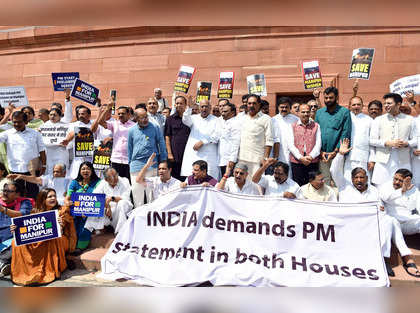- Opposition parties in the new Alliance INDIA aim to file a no-confidence vote against the government in order to force the Prime Minister to talk about the turmoil in Manipur.
- A motion of no-confidence in the Indian legislative system is critical in judging the government’s strength and responsibility.
- This resolution allows opposition parties or any member to voice their dissatisfaction with the Council of Ministers, resulting in a major political event.

Procedure for No-Confidence Motion: Rule 198:
- The procedure for a no-confidence motion is outlined in Rule 198 of the Lok Sabha’s rules of procedure and conduct.
- Absence of Grounds: This does not necessitate mentioning particular grounds in the motion, and even if mentioned, these grounds do not form part of the motion.
- Exclusive to the Lok Sabha: It can only be moved in the Lok Sabha and not in the Rajya Sabha.
- Written Notice: Any Lok Sabha member may move a no-confidence motion by filing written notice before 10 a.m.
- Acceptance and Discussion: The motion must be supported by a minimum of 50 members in order to be accepted. When a motion is accepted, the Speaker announces the date for discussion within 10 days.
- Voting methods include voice vote, division vote (using electronic gadgets, slips, or a ballot box), and secret ballot vote.
Implications of a Voting Majority Decision
- After the vote, the side with the majority determines the outcome of the motion.
- The Speaker’s Role: If there is a tie, the Speaker casts the deciding vote to break the tie.
Outcomes
- Government Resignation: If the government fails to demonstrate a majority in the House, it is required to resign.
- Political Implications: A successful no-confidence vote can result in significant political changes and cabinet reshuffling.
Source: https://indianexpress.com/article/explained/everyday-explainers/no-confidence-motion-8860985/
